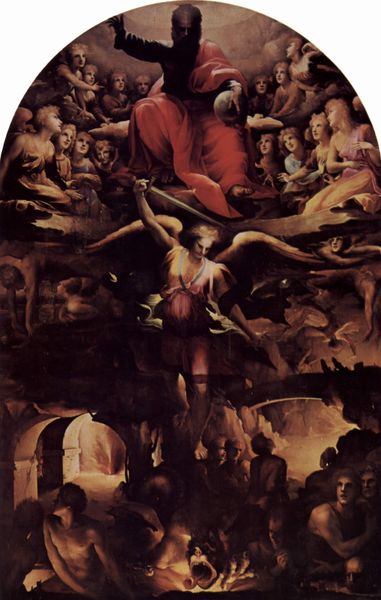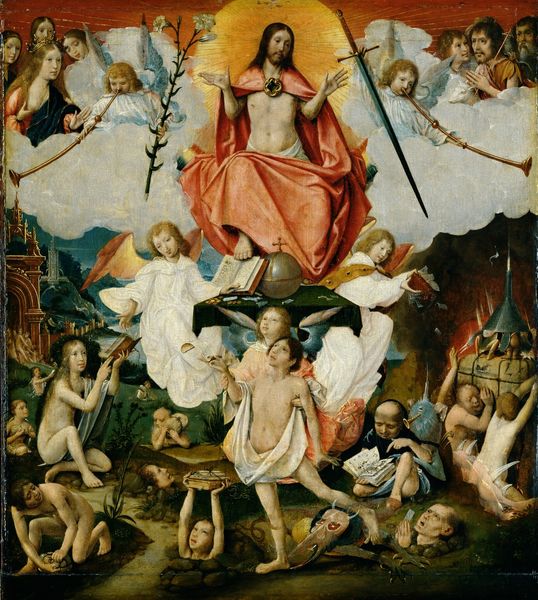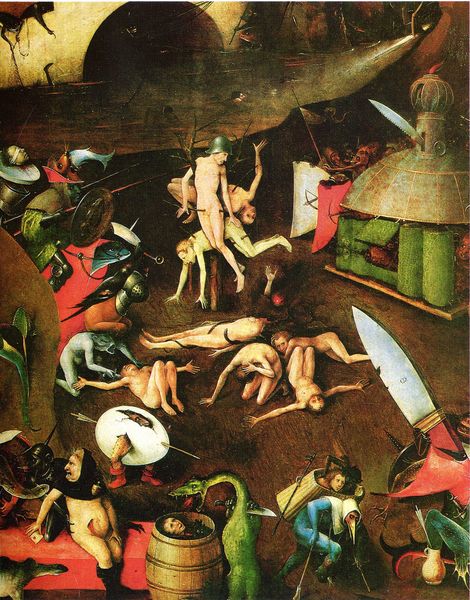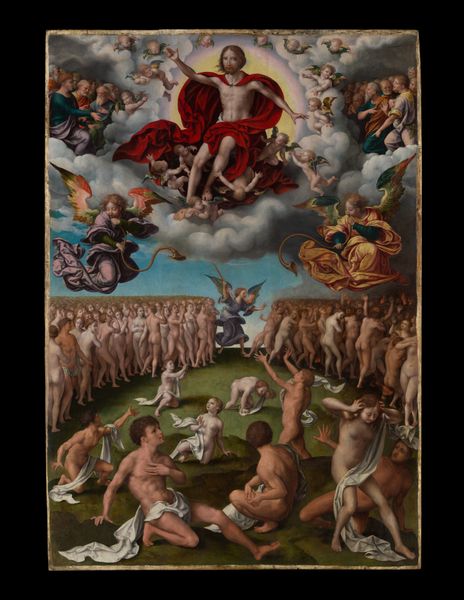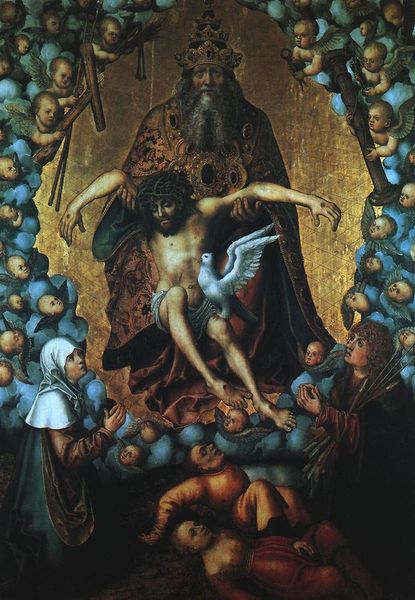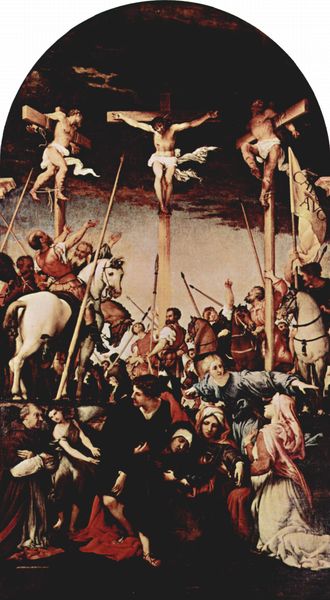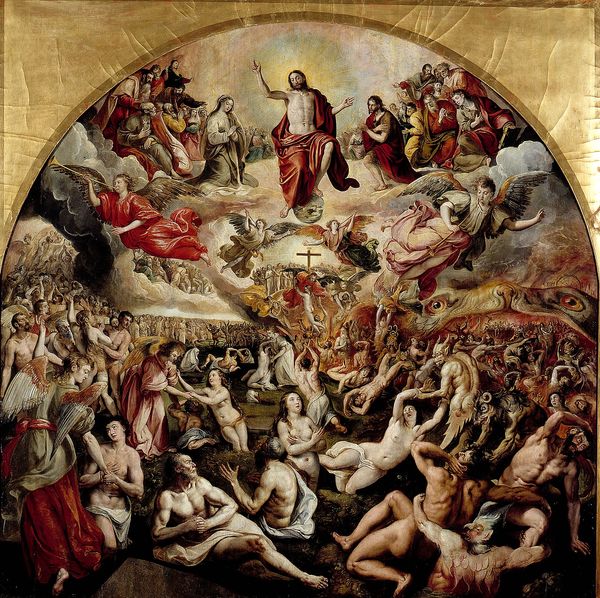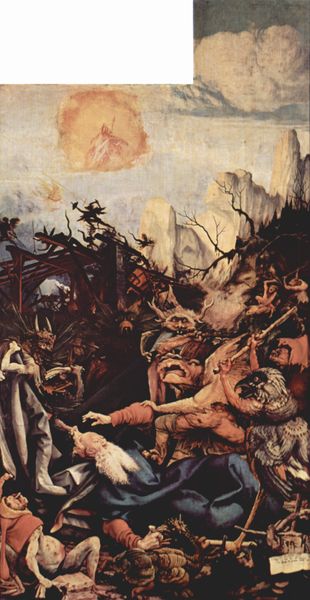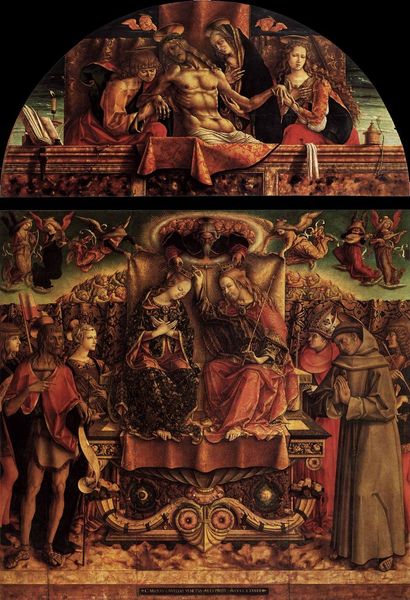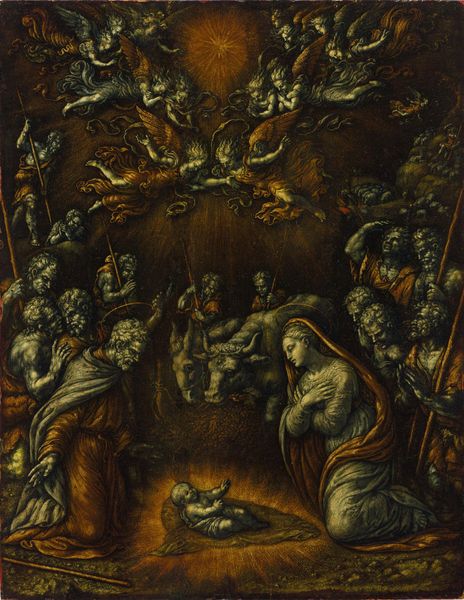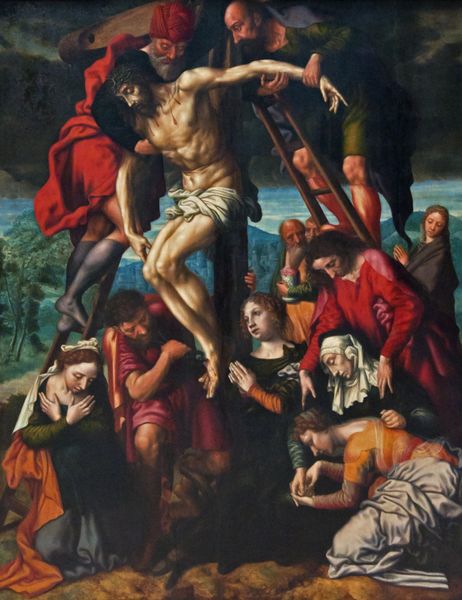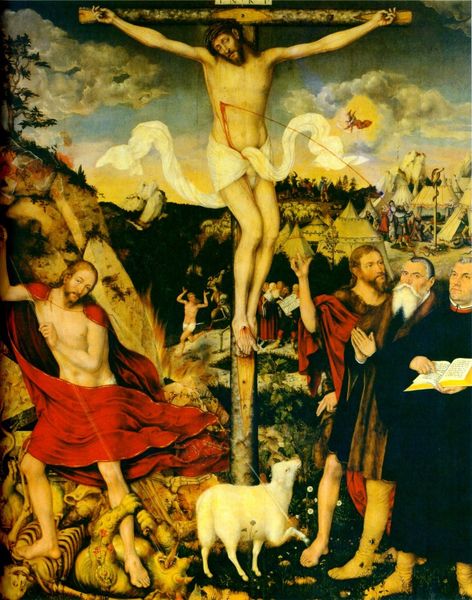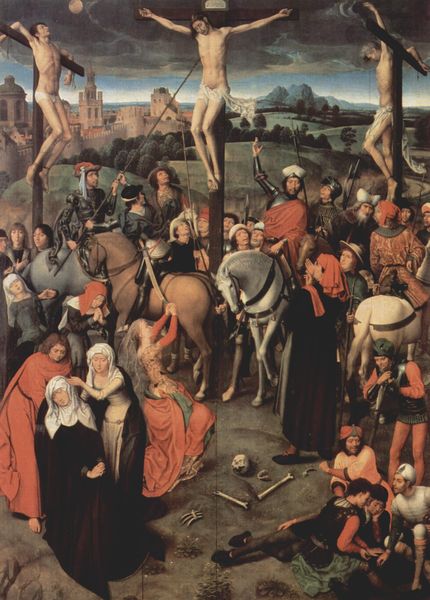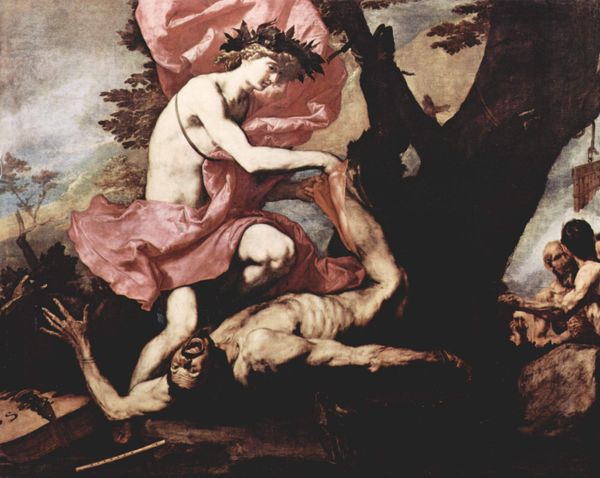
The Last Judgment triptych, central panel, Maiestas Domini with Archangel Michael weighing the souls 1471
0:00
0:00
hansmemling
National Museum, Gdańsk, Poland
tempera, painting
#
portrait
#
medieval
#
allegory
#
tempera
#
painting
#
figuration
#
flemish
#
christianity
#
men
#
history-painting
#
northern-renaissance
#
nude
#
christ
Dimensions: 221 x 160 cm
Copyright: Public domain
Editor: This is the central panel of Hans Memling's "The Last Judgment" triptych, dating back to 1471. It depicts Christ and Archangel Michael using tempera paint, a fairly common medium at that time. What stands out to me is the sharp contrast between the orderly arrangement of the blessed and the chaotic depiction of the damned. What are your initial thoughts when you view this piece? Curator: Well, as a materialist, I'm drawn to how Memling used his materials and the socioeconomic implications behind it. The tempera itself would have required a complex, labour-intensive process, showcasing both Memling’s skill and the value placed on craftsmanship in the 15th century. How do you see the labour aspect reflected in the different ways individuals are depicted? Editor: It's an interesting connection; I hadn't thought of that. Do you mean like, the blessed appear serene and "well-made," almost idealized, while the damned are rendered in a state of disrepair and suffering? Curator: Precisely. Consider too the availability of pigments; certain colors were more costly than others. How do you see the use of color contributing to the themes of power and damnation? Furthermore, how does the use of panel contribute to the narrative? Editor: Hmm, the radiant reds around Christ definitely draw attention, almost flaunting the richness of the pigments available. Compared to the more muted tones of the damned, writhing below. I guess the permanence of painting on wood and the deliberate composition adds to the weighty, almost fatalistic view. Curator: Indeed, it solidifies the themes in ways other supports or cheaper pigments could not. Editor: Thinking about the piece like that gives it so much more dimension! I was initially caught up in the religious aspects, but this deeper dive into production and social values opens a whole new perspective. Curator: That's the beauty of art, it operates on multiple levels simultaneously. Material choices always reflect cultural choices.
Comments
No comments
Be the first to comment and join the conversation on the ultimate creative platform.
